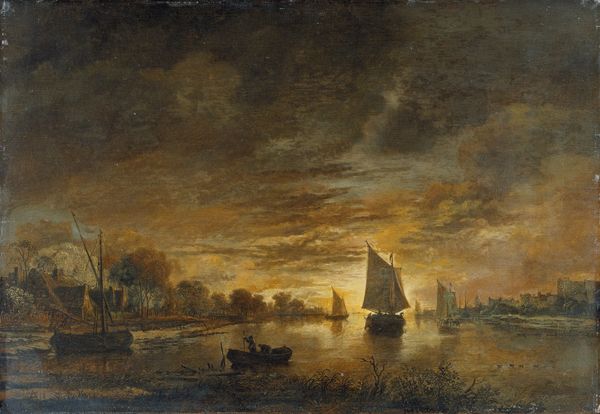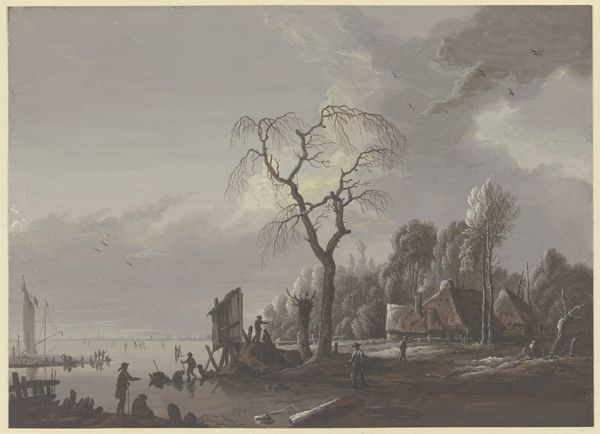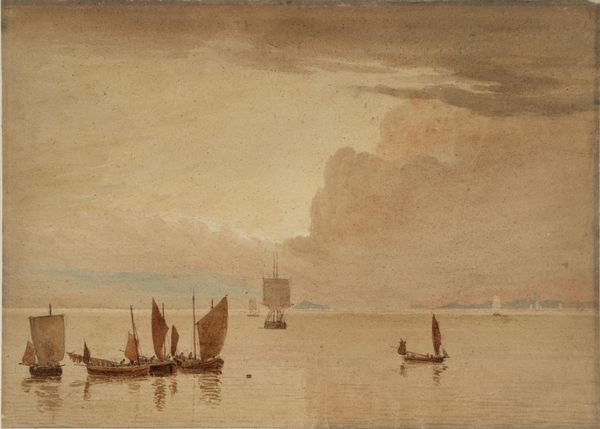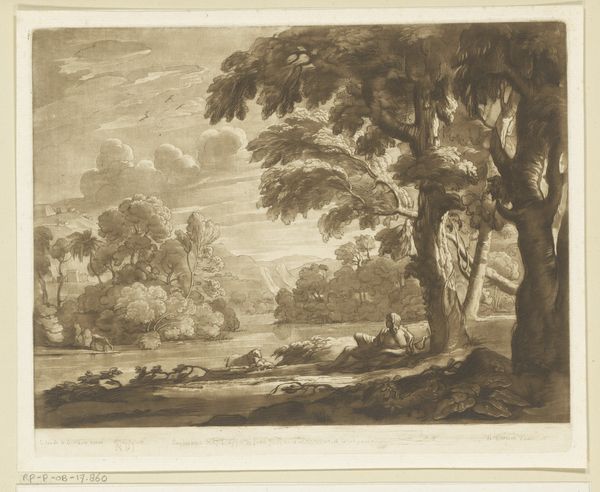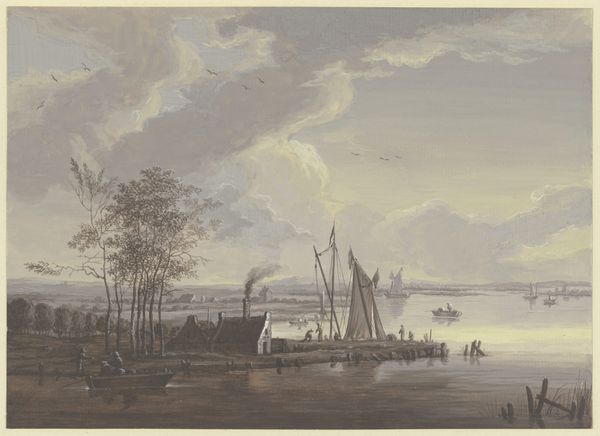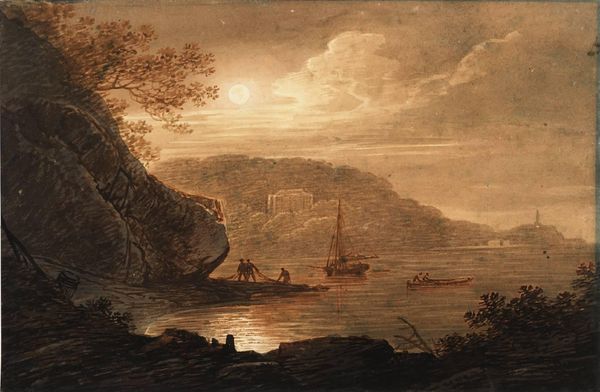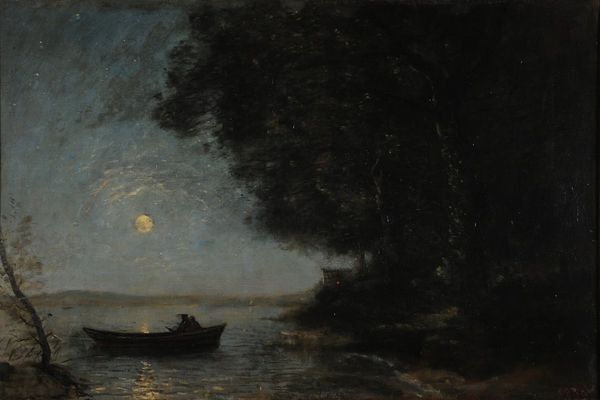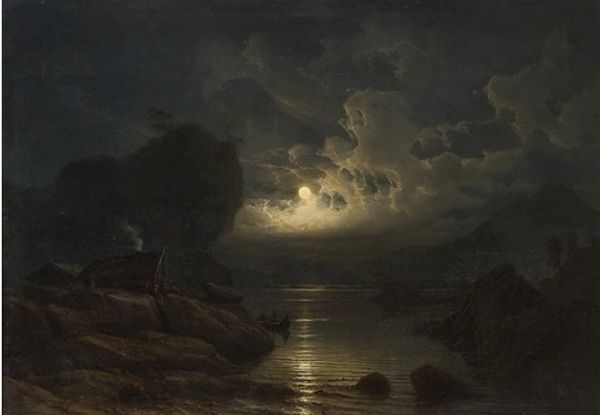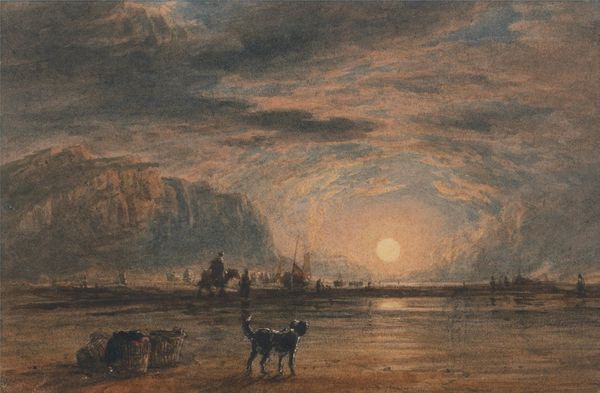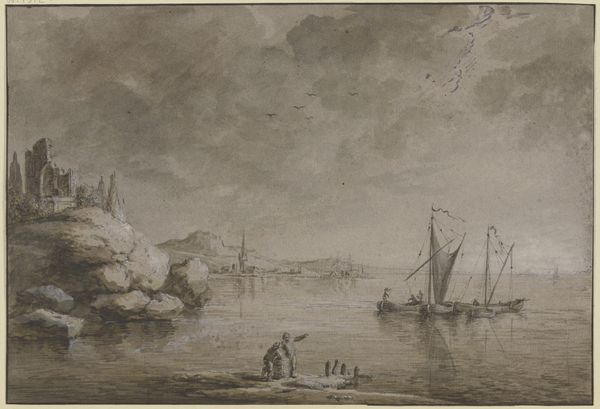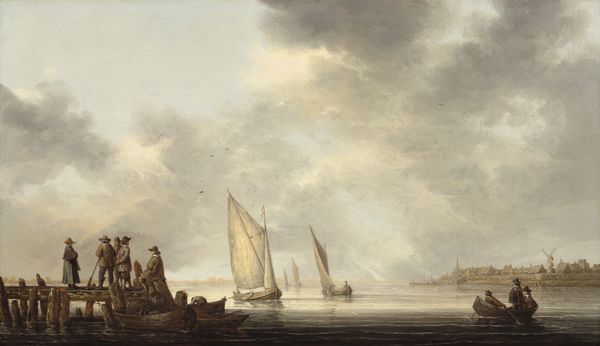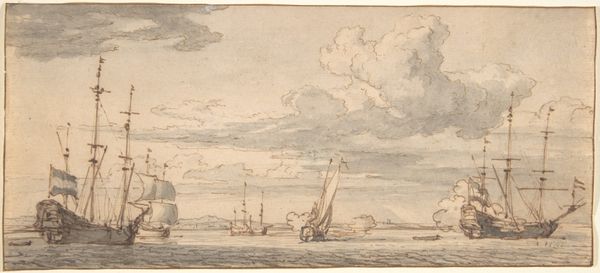
The River Elbe Downstream of Hamburg by Moonlight 1823 - 1833
drawing, print, pencil, graphite, charcoal
drawing
landscape
river
charcoal drawing
pencil drawing
romanticism
pencil
graphite
charcoal
watercolor
Dimensions: sheet: 15 3/4 x 23 1/16 in. (40 x 58.5 cm)
Copyright: Public Domain
Curator: At first glance, this image strikes me as rather melancholic. It’s undeniably beautiful, with the light shimmering on the water, but the overall effect is subdued, almost wistful. Editor: I see that. We are looking at “The River Elbe Downstream of Hamburg by Moonlight”, created by Christian Ernst Morgenstern sometime between 1823 and 1833. This piece resides here at the Metropolitan Museum of Art. It’s rendered in graphite, charcoal, and pencil on paper. Considering the date, what sociopolitical narratives are evoked for you? Curator: The time period is certainly evocative. The image reflects the aesthetics of the Romantic era—the vastness of nature, humanity’s small place within it. I'm curious how the artist’s identity shapes the image. Was this a period of personal upheaval that’s channeled into the work? The title also gives a strong sense of place. The Elbe, downstream from Hamburg – what did that location signify then, and how might it read differently through, say, an ecocritical lens today? Editor: It's crucial to consider how art institutions shaped the creation and perception of landscapes during that time. What role did patrons, art markets, or the development of the museum system play? Could this image serve as a form of social commentary? Were industrial changes reflected here? Curator: Absolutely. There’s also the romantic ideal of nature versus the reality of industrialized port cities like Hamburg. What kind of audience was it intended for? Were the class dynamics within the art world playing a role? How are women represented in the artistic establishment and is it visible in how the landscape is being approached or not? Editor: That's it: Considering the context helps unveil these intricate levels of representation. And of course, these artistic depictions actively contributed to shaping our views of landscapes, their value and importance. Curator: Precisely. Understanding those historical and social dynamics, from patronage to ecological shifts, opens so much more than just an image of a pretty, moonlit river. Editor: Indeed. There’s much more to a landscape than meets the eye, and that’s the enduring power of works like these.
Comments
No comments
Be the first to comment and join the conversation on the ultimate creative platform.
